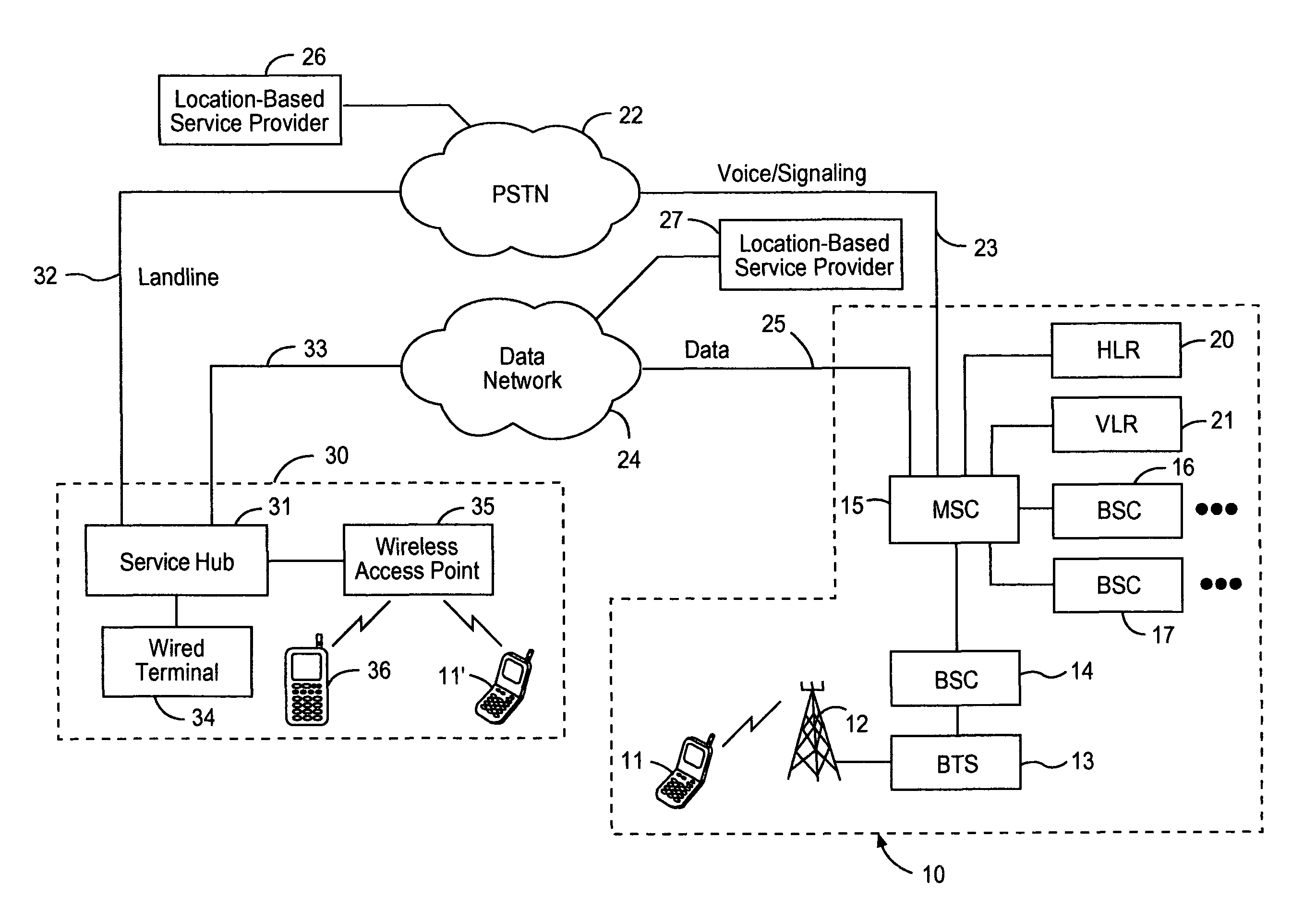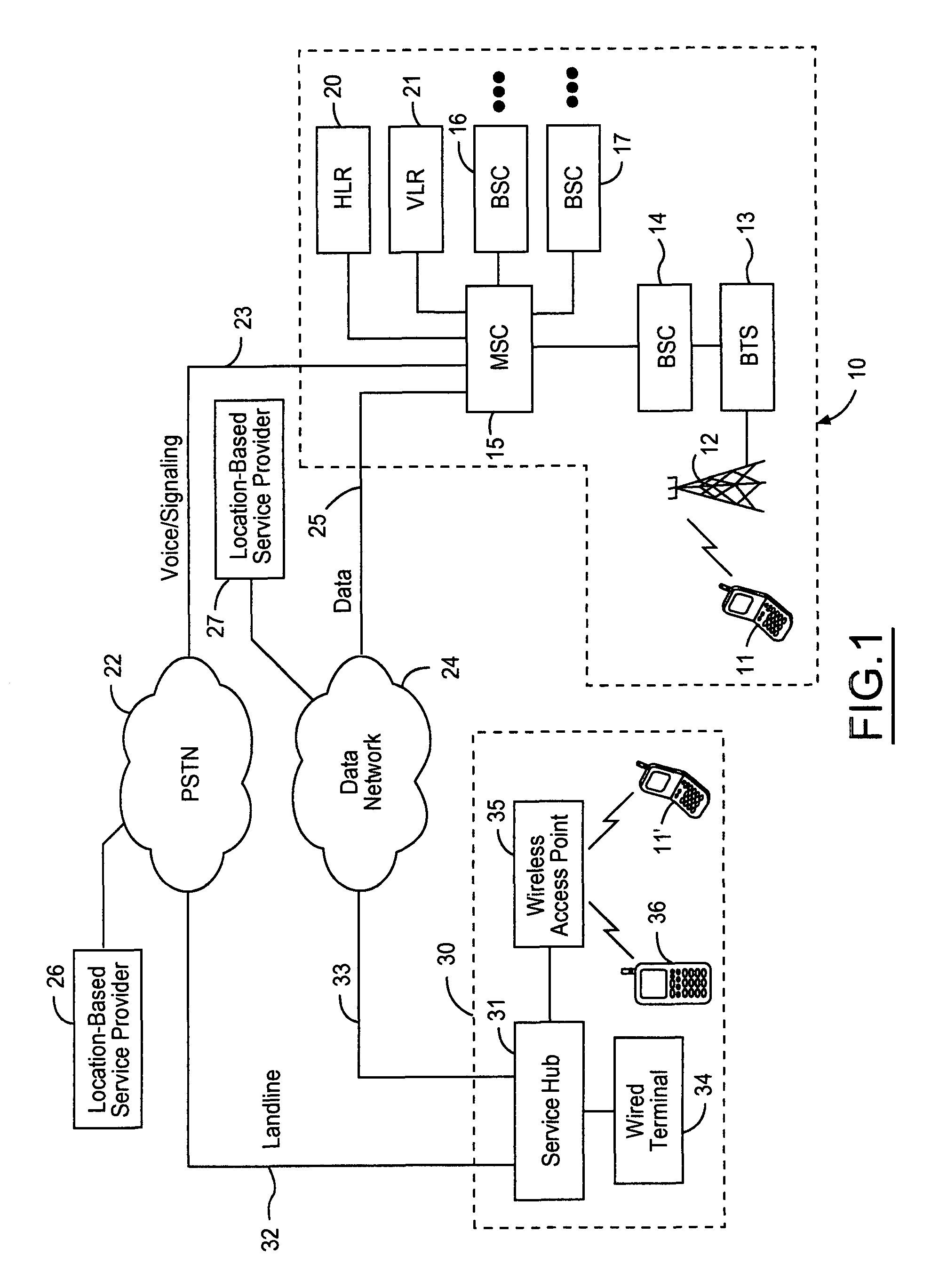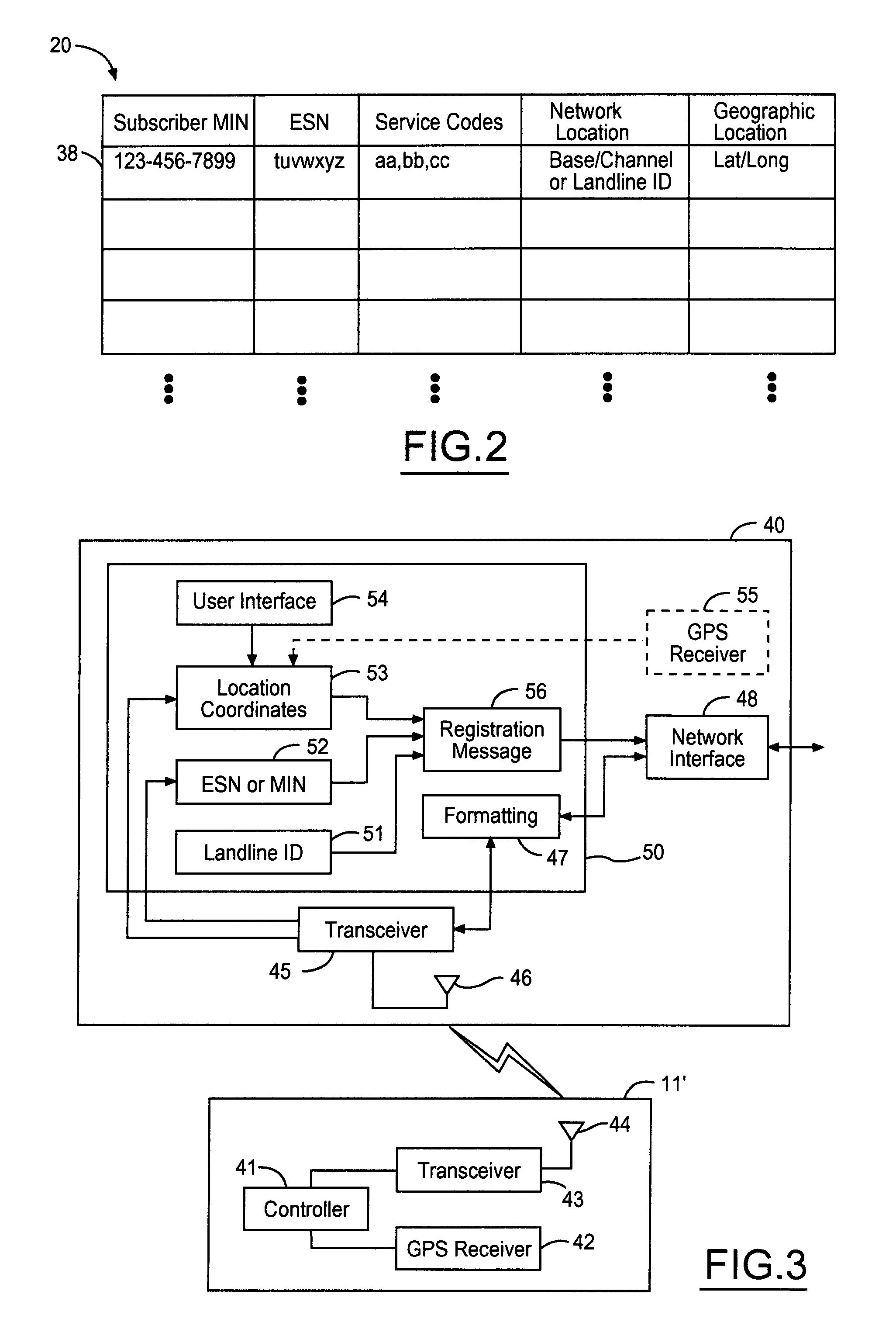Wireline terminal accessing mobile telephone services
a wireless terminal and mobile telephone technology, applied in the field of wireless telecommunication services, can solve the problems of not supporting location-based services, dual-mode wireless device users, and not having the functionality of location-based services
- Summary
- Abstract
- Description
- Claims
- Application Information
AI Technical Summary
Problems solved by technology
Method used
Image
Examples
Embodiment Construction
[0026]Referring to FIG. 1, a wireless network 10 provides cellular service to a mobile wireless terminal 11. Wireless terminal 11 communicates over an air link with a cellular tower 12 connected to a base transceiver station (BTS) 13. A base station controller (BSC) 14 is coupled to BTS 13 and a mobile switching center (MSC) 15. MSC 15 is typically coupled to many base station controllers such as BSC 16 and BSC 17 for controlling additional cells. A home location register (HLR) 20 and a visitor location register (21) are coupled to MSC 15 in a conventional manner. MSC 15 is coupled to a public switched telephone network (PSTN) 22 by a voice / signaling link 23 and a data network 24 (e.g., the Internet) by a data link 25.
[0027]A wireless subscriber using terminal 11 is capable of receiving voice and data services through MSC 15 from providers that are accessible via PSTN 22 and data network 24. If the wireless subscriber using terminal 11 is a subscriber to the cellular provider operat...
PUM
 Login to View More
Login to View More Abstract
Description
Claims
Application Information
 Login to View More
Login to View More - R&D
- Intellectual Property
- Life Sciences
- Materials
- Tech Scout
- Unparalleled Data Quality
- Higher Quality Content
- 60% Fewer Hallucinations
Browse by: Latest US Patents, China's latest patents, Technical Efficacy Thesaurus, Application Domain, Technology Topic, Popular Technical Reports.
© 2025 PatSnap. All rights reserved.Legal|Privacy policy|Modern Slavery Act Transparency Statement|Sitemap|About US| Contact US: help@patsnap.com



